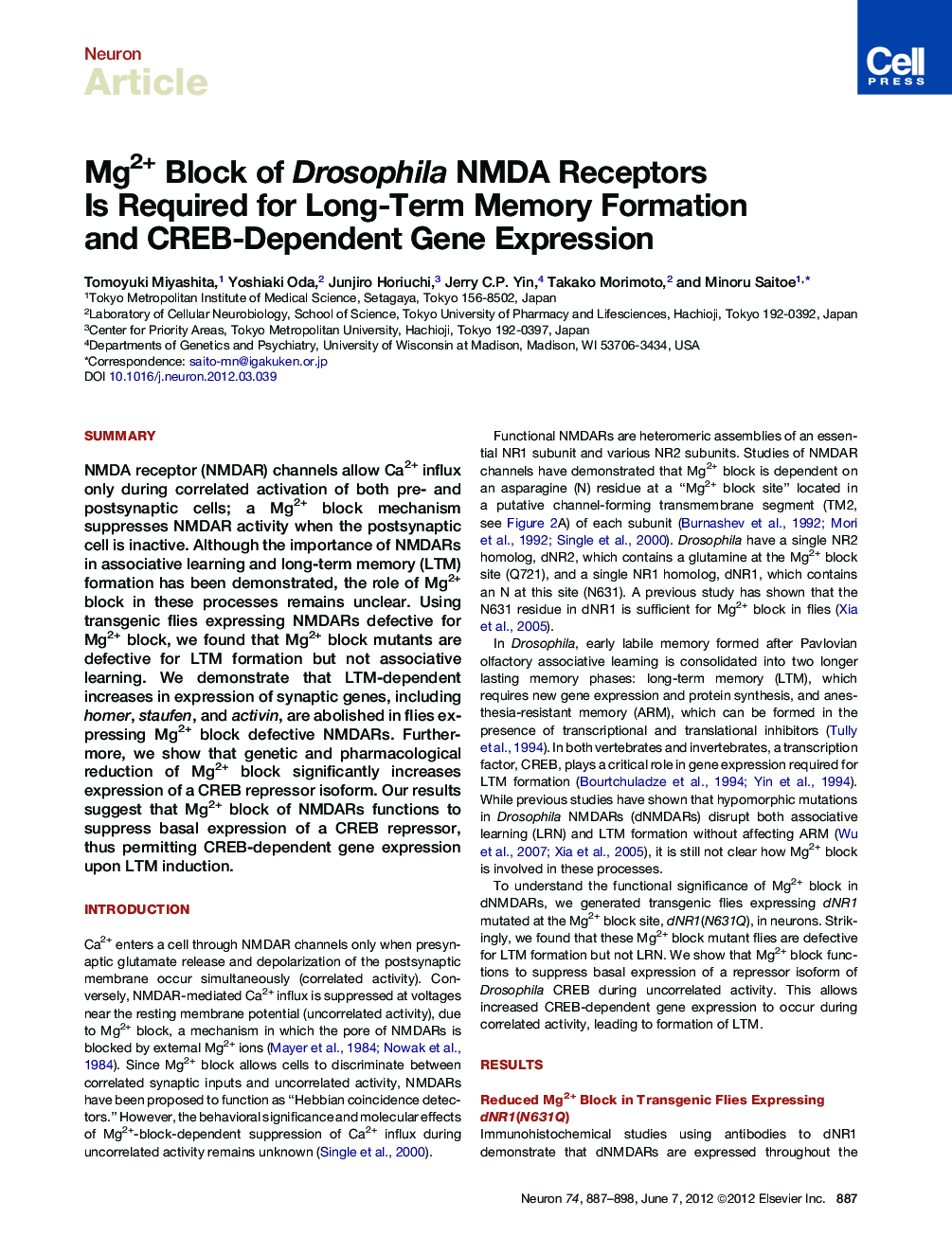| Article ID | Journal | Published Year | Pages | File Type |
|---|---|---|---|---|
| 4321390 | Neuron | 2012 | 12 Pages |
SummaryNMDA receptor (NMDAR) channels allow Ca2+ influx only during correlated activation of both pre- and postsynaptic cells; a Mg2+ block mechanism suppresses NMDAR activity when the postsynaptic cell is inactive. Although the importance of NMDARs in associative learning and long-term memory (LTM) formation has been demonstrated, the role of Mg2+ block in these processes remains unclear. Using transgenic flies expressing NMDARs defective for Mg2+ block, we found that Mg2+ block mutants are defective for LTM formation but not associative learning. We demonstrate that LTM-dependent increases in expression of synaptic genes, including homer, staufen, and activin, are abolished in flies expressing Mg2+ block defective NMDARs. Furthermore, we show that genetic and pharmacological reduction of Mg2+ block significantly increases expression of a CREB repressor isoform. Our results suggest that Mg2+ block of NMDARs functions to suppress basal expression of a CREB repressor, thus permitting CREB-dependent gene expression upon LTM induction.
► Mg2+ block mutant flies are defective for long-term olfactory aversive memory ► Mg2+ block is required for training-induced expression of long-term memory genes ► A CREB repressor isoform abolishes induction of long-term memory genes ► Mg2+ block functions to inhibit basal expression of CREB repressor
